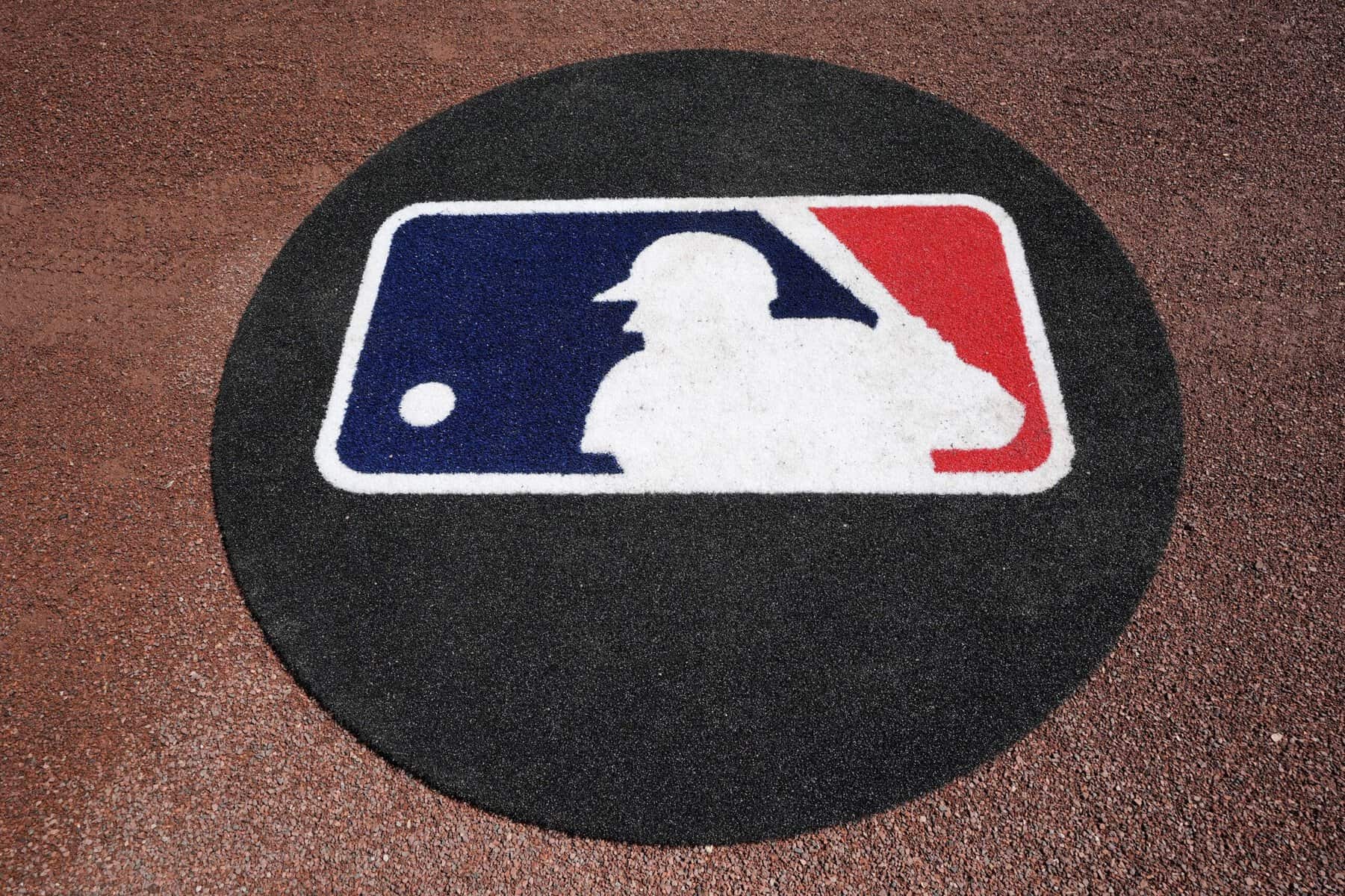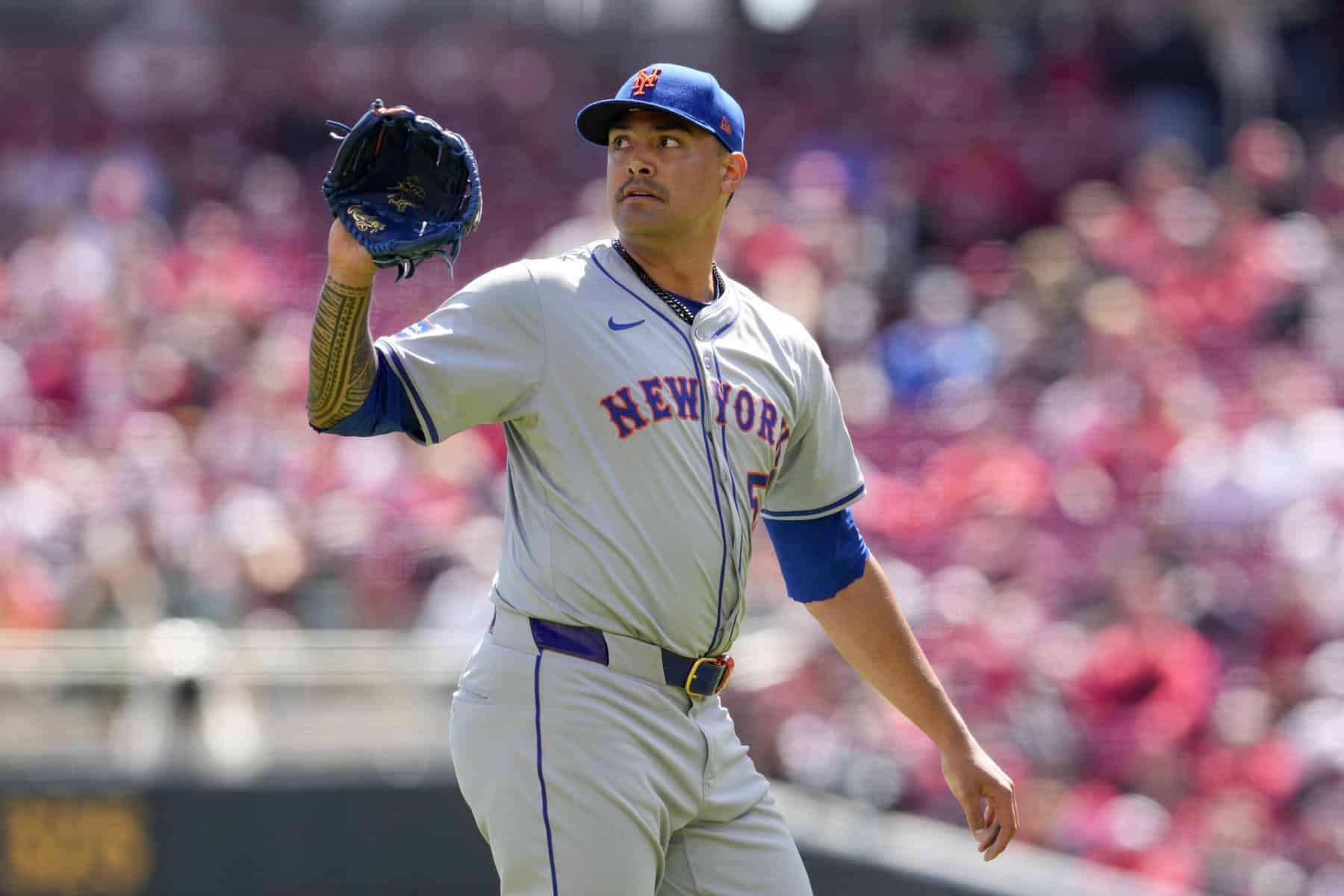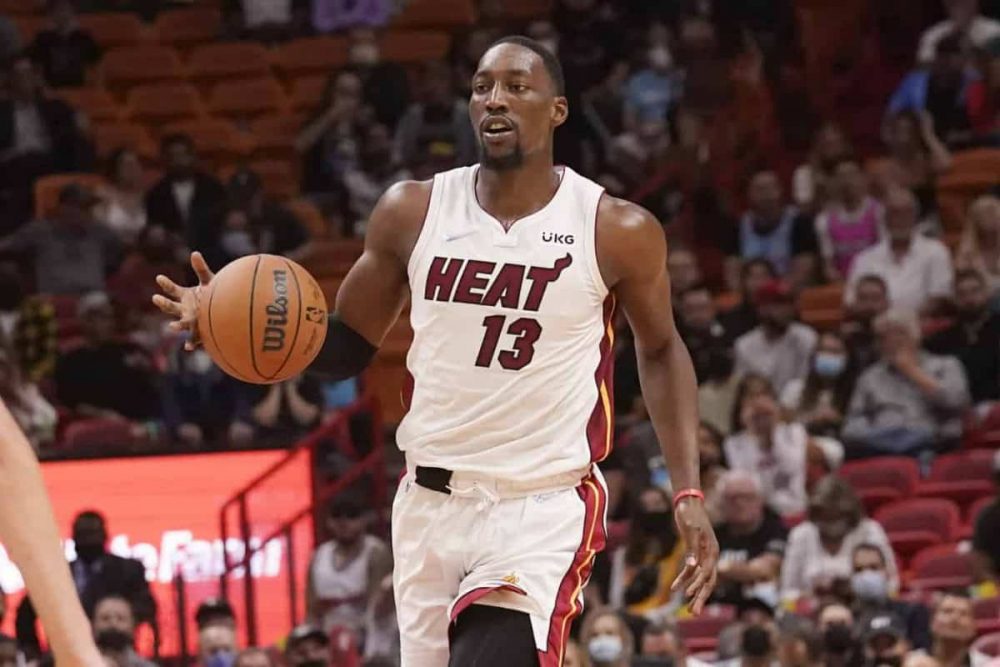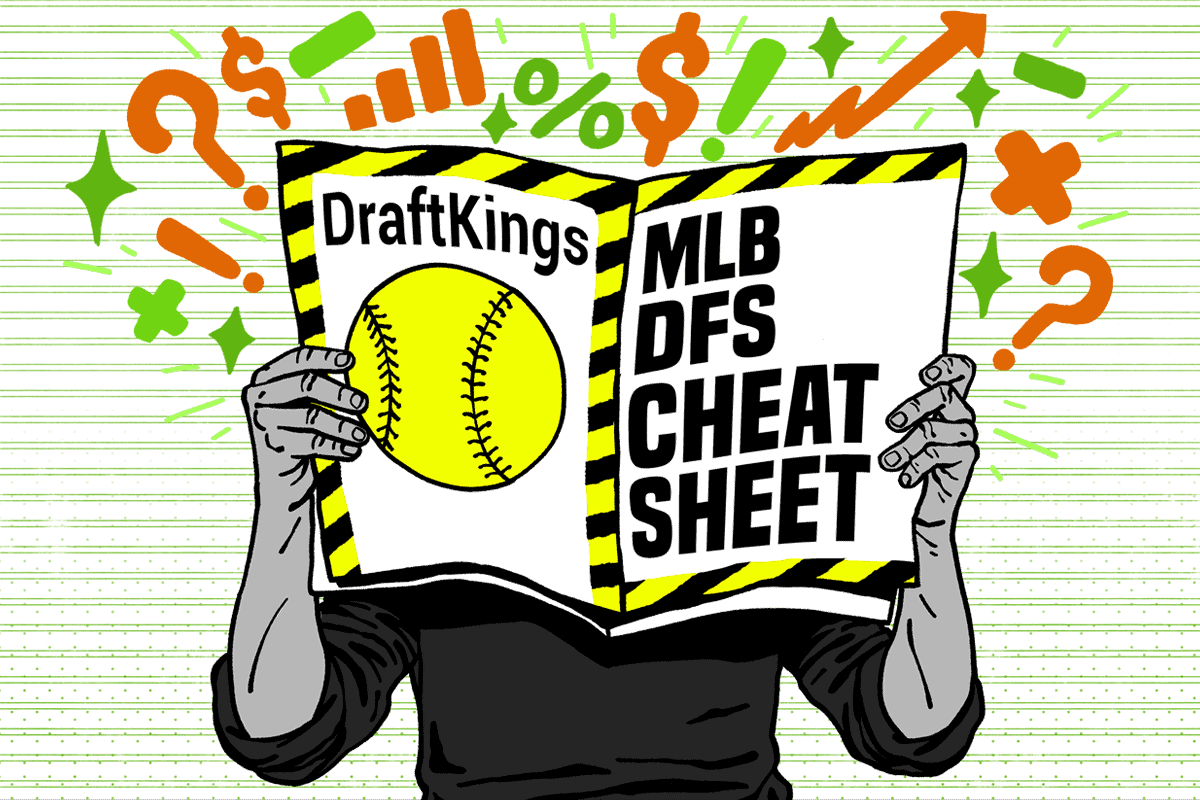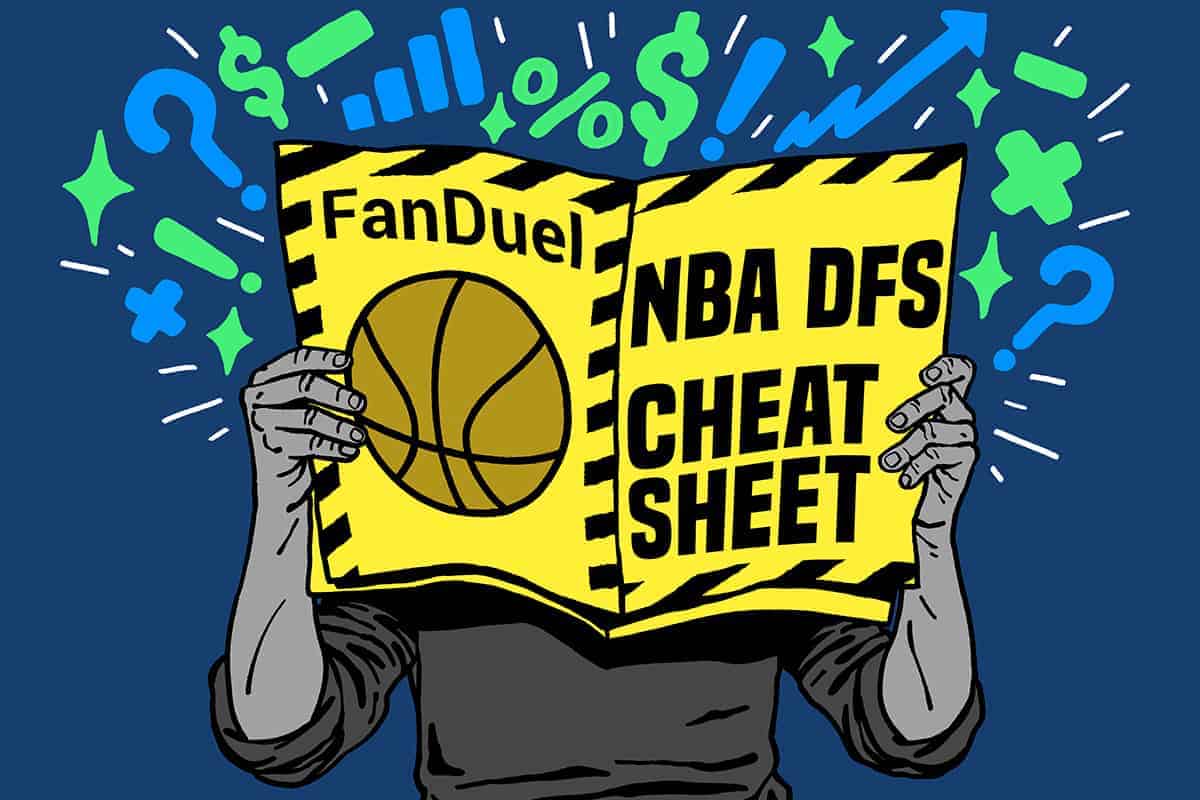Conference Championship weekend action continues with a Saturday main slate on DraftKings and FanDuel. This college football DFS breakdown will look at both teams and provide information about each skill position player of note. Make sure to check out our projections, depth charts and datasheets for more information. With that said, let us dive into the first iteration of the Conference Championship CFB DFS picks for Saturday’s matchup.
College Football DFS: Conference Championship Saturday CFB Picks
Baylor vs. Oklahoma State
Baylor (20.5 Total)
Plays per Game – 68.6 (82nd)
Pass Rate – 40.40% (108th)
After going 2-7 in 2020, Baylor improved to 10-2 this year and now will play for the Big12 Championship. As an offense, Baylor plays slow, run-heavy football behind their game manager Gerry Bohanon ($6,200). Bohanon has solid mobility with 301 yards rushing this year, but he offers very little as a passer. Bohanon only averages 197.5 yards passing per game. With only one game above 300 yards. Making matters worse, Bohanon already showed his floor against Oklahoma State earlier this year, passing for 173 yards and no scores. With a low implied team total, Bohanon is a pure GPP-play here.
One of the better rushing attacks in the conference, Baylor is led by Abram Smith ($6,800) and Trestan Ebner ($5,300) at the running back position. Smith averages 113.6 rushing and 5.7 yards receiving per game on 19.3 touches. However, Smith has taken on a much larger role of late, reaching at least 20 touches in each of his last four games. While Ebner has seen a reduced workload, he still averages 60.5 rushing and 22.3 yards receiving per game on 14.1 touches. Complementing Smith, Ebner has at least 16 touches in three straight games. Ebner also functions as the preferred pass catching back, out-targeting Smith 30-15 on the year. Oklahoma State possesses one of the top run defenses in the country, limiting opponents to 90.5 yards rushing per game. Despite the tough matchup, both Smith and Ebner are GPP considerations behind Baylor’s 59.6% run rate this year.
In the receiving game, Tyquan Thornton ($5,700) serves as Bohanon’s alpha receiver. However, Baylor’s run-first offense has depressed his overall stats. Thornton boasts a 30% target share, but that equates to just 72.3 yards receiving and 7.3 targets per game. Perhaps negative game script could thrust Thornton into elevated volume. R.J. Sneed ($4,000) and Drew Estrada ($3,300) operate as the WR2 and WR3, averaging 4.7 and 3.4 targets per game. Estrada has been more involved of late with 12 targets in Baylor’s last two games. Tight end Ben Sims ($3,600) is also involved and averages 3.5 targets per game himself. Outside of Thornton, the entire Baylor passing attack is volatile and best left to large field tournaments.
Oklahoma State (26 Total)
Plays per Game – 75.5 (22nd)
Pass Rate – 38.87% (117th)
Finishing the regular season 10-1, only a slip up against Iowa State prevents Oklahoma State from the College Football Playoff. Like Baylor, Oklahoma State plays run-heavy football. However, they will play with pace, which helps dual-threat quarterback Spencer Sanders ($7,200). Sanders has much better mobility than Bohanon with 510 yards rushing this year. He only averages 200.3 yards passing per game on 26.7 attempts, but he has shown an occasional ceiling. However, Baylor also plays excellent defense. Against the Bears earlier this year, Sanders threw for 182 yards and three interceptions, while rushing for 76 yards on the ground. This is a tougher matchup and one of the less interesting games for DFS on the board. Sanders is a pure GPP play.
After getting banged up two weeks ago, Utah State transfer Jaylen Warren ($6,600) looked fully healthy in Oklahoma State’s season finale. He handled 18 carries and four targets, while change of pace back Dominic Richardson ($3,900) only saw one carry. On the year, Warren averages 94.4 yards rushing and 16.1 yards receiving per game on 21.8 touches. However, Oklahoma State has shown a willingness to ease off Warren in non-competitive games. Warren had a four-game stretch in the middle of the season with at least 30 touches in each contest. Seeing only one other running back touch last week points to Warren again occupying this feature back role in Oklahoma State’s offense. Baylor plays solid run defense as well, but they allow 119.5 yards rushing per game to their opponents.
While Oklahoma State has a similar run rate, their higher play volume leads to more intrigue for DFS. Tay Martin ($7,300) functions as Oklahoma State’s alpha receiver with a 28.9% target share. He averages 77.6 yards per game on 8.4 targets, but he has seen elevated volume of late. He averages 10.3 targets per game in Oklahoma State’s last four games. Oklahoma State has also gotten much healthier at receiver down the stretch. Brennan Presley ($5,200) is the clear WR2, averaging 5.5 targets and 40.8 yards receiving per game. Blaine Green ($3,500) and Jaden Bray ($3,000) have also played more of late with Oklahoma State often implementing four wide receiver formations. Green and Bray participated in 73% and 89% of routes, respectively, last week with tight end John Paul Richardson ($3,300) missing the game. If Richardson returns, Green and Bray could see slightly lower volume, but Oklahoma State has not utilized the tight end position much in 2021.
Kent State vs. Northern Illinois
Kent State (38.75 Total)
Plays per Game – 78.3 (10th)
Pass Rate – 42.04% (105th)
After a brutal non-conference schedule, Kent State finished 7-5 and booker an appearance in the MAC title game. Kent State plays at one of the fastest paces in the country, while employing a run-heavy attack. Dual threat Dustin Crum ($8,300) already has 565 yards rushing this year. He also averages 232.7 yards per game on 27.8 attempts as a passer. These numbers improve significantly in MAC play, where Crum eclipsed 300 yards in three of his last four games. Northern Illinois plays horrific defense, making Crum one of the best price-adjusted quarterbacks on the board.
At running back Kent State primarily utilizes two backs in Marquez Cooper ($6,500) and Xavier Williams ($4,400). Cooper averages 90 rushing and 7.5 yards receiving per game this year on 18.8 touches. However, Cooper’s touches have risen drastically inside MAC competition. Cooper has at least 22 touches in each of Kent State’s last three games, pointing to another large workload here. Similarly, Williams averages 59.6 yards rushing and 3.3 yards receiving per game on 10.3 touches. Williams’ workload is far more volatile, but Northern Illinois allows 225.9 yards rushing per game. With an immense total here, Cooper is an excellent price adjusted play and Williams looks viable for GPPs as well.
Kent State often employs four wide receiver sets, led by Dante Cephas ($7,100). Cephas averages 85 yards receiving per game on 8.6 targets, which equates to a 30.8% target share inside Kent State’s offense. Behind Cephas, Keshunn Abram ($5,400) is the clear WR2. He averages 52.3 receiving yards on 5.4 target himself. However, he has recently taken on a larger role, averaging 6.5 targets per game in Kent State’s last four contests. The receiving room is rounded out by Nykeim Johnson ($4,100) and Ja’Shaun Poke ($3,800). Johnson averages 5.3 targets per game on the year, compared to 3.7 for Poke. However Poke averages 5.3 to Johnson’s 4.3 in Kent State’s last three game. Both have participated in around 70% of the team’s routes of late, making Poke a slightly better price-adjusted play here. Any and all of the Kent State receivers are viable here.
Northern Illinois (35.75 Total)
Plays per Game – 70.9 (60th)
Pass Rate – 37.56% (123rd)
Michigan State transfer Rocky Lombardi ($7,500) led Northern Illinois to an 8-4 season and a trip to the MAC Championship. Lombardi has solid mobility with 390 yards rushing on the year. However, he is very volatile with three games over 70 yards and seven below 30. He is equally erratic as a passer, averaging 209.8 yards per game on 26.8 attempts. However, he eclipsed 300-yards twice and fell below 200 on six occasions. Lombardi also missed Northern Illinois’ final regular season game with an undisclosed injury. Most believe he will be ready to go here, but his status must be monitored. Freshman Ethan Hampton ($6,700) was a complete disaster in his place. Kent State plays equally poor defense, making Lombardi a solid, but more volatile play at the quarterback position in this game.
With Kent State also struggling to defend the run, Northern Illinois draws an equally tantalizing matchup. Overall, Kent State allows 188.1 yards rushing per game, which should benefit lead back Jevyon Ducker ($5,600). Former lead back Harrison Waylee ($6,400) has not played since Week 5 and has not had his status updated since. In his place, Ducker has played efficient football as the lead back. He averages 89.2 yards rushing per game on 16.8 touches. However, his workload is not quite as consistent as some other backs on this slate. Clint Ratkovich ($4,600) and Antario Brown ($4,200) will mix in for change of pace touches, which includes passing game work. Ducker only has three targets on the year, making him a risky play in negative game scripts. Overall, Ducker is a solid back in GPPs in an elite game environment, but he cedes more work than other backs on this slate.
Northern Illinois lost Tyrice Richie ($4,200) earlier this year and nothing indicates that he will make his return here. Without Richie, Trayvon Rudolph ($6,900) saw 35 targets in the first two games Richie missed. However, he has seen just 12 combined targets in Northern Illinois’ last two games. On the year, he averages 68.7 yards receiving per game on 6.1 targets. In addition to Rudolph, Cole Tucker ($5,000) returned from injury at a key point in time for NIU. Tucker averages 65.4 yards receiving per game and has seen 10.7 targets per game over NIU’s last three games. Tucker did miss Northern Illinois’ season finale, but he is expected to return here. Outside of Rudolph and Tucker, NIU uses Miles Joiner ($3,100) as their primary tight end and Messiah Travis ($3,300) and Mohamed Toure ($3,000) split time as the WR3. None are these ancillary options are particularly involved.
Utah State vs. San Diego State
Utah State (22 Total)
Plays per Game – 79 (7th)
Pass Rate – 48.10% (61st)
After a 9-3 season, Utah State finds themselves as a six-point underdog against San Diego State in one of the most interesting Mountain West Championships in recent memory. Utah State plays extremely fast but somewhat balanced in terms of pass rate. Arkansas State transfer Logan Bonner ($7,900) is not the most mobile quarterback with 68 yards rushing on the year. However, he averages 272.1 yards passing per game on 31.6 attempts. This also comes with a strong ceiling, including 300 yards passing on four occasions this year and another game with 298 yards. The issues for Utah State are a low total and a tough matchup against a slow, defensively sound San Diego State defense. Bonner will also cede a few snaps to gadget quarterback Andrew Peasley ($7,600) on occasion. While the offense sometimes elevates Bonner, this matchup makes him a dicey GPP option here.
In the run game, Utah State faces a brutal matchup against a stout San Diego State defense that allows only 84.5 yards rushing per game. Already a tough matchup, Utah State runs a rotation at running back as well. Calvin Tyler ($5,000) leads this rotation with 71.2 rushing and 4.3 yards receiving per game on 16.7 touches. However, he has at least 20 touches in two of Utah State’s last three games. In the other contest, Utah State demolished New Mexico 35-10 and took their foot off the gas. Behind him, Elelyon Noa ($3,900) is the primary change of pace and John Gentry ($3,100) plays primarily in blow outs. Noa averages 45.2 yards rushing himself on 11.4 touches. However, he has been below that mark in each of the last two games. His season long numbers are inflated due to a short stretch of time when Tyler was hurt, and he operated as the clear lead back. Either way, Tyler is a GPP-only play from this backfield.
Utah State typically operates with four wide receiver in their uptempo, spread system. They also have a pure alpha receiver in Deven Thompkins ($7,400). Thompkins averages 130.1 yards receiving per game on 11.5 targets. He also receives an occasional carry in the run game, giving him a solid floor regardless of matchup. The only thing depressing Thompkins’ projection here is a low implied team total against a tough defense. Derek Wright ($6,000) is the WR2, averaging 58.3 receiving yards per game on 5.8 targets. His 16.9% target share falls well behind Thompkins’ 33.7% target share. In fact, Wright is only narrowly ahead of Brandon Bowling ($4,800) and Justin McGriff ($3,500) in terms of targets. However, Wright averages 6.3 targets per game over Utah State’s last three contests, while Bowling plays a more rotational role with 4.5 targets in that same span. McGriff plays a more consistent role than Bowling, but his 368 yards receiving fall well behind Wright and Bowling, who check in with 699 and 630, respectively. In a tough spot, none of these receivers are priority options, but they are volume-based GPP plays.
San Diego State (28 Total)
Plays per Game – 66.3 (109th)
Pass Rate – 39.37% (115th)
San Diego State finished the regular season with an 11-1 record and their only loss coming against Fresno State. The Aztec generally play defensively sound football and employ one of the slowest, run-heaviest offenses in the entire country. They also have quarterback issues, which is rare for a team playing for the conference championship. After getting hurt earlier in the year, Jordon Brookshire ($5,900) entered last week’s game against Boise State for a struggling Lucas Johnson ($5,300). The San Diego coaching staff noted at the beginning of the week that Brookshire would likely start here, but neither quarterback has a long leash. Brookshire is very mobile, with 138 yards rushing in limited game action this year. He also completed 11 of 15 attempts for 192 yards against Boise State last week, which contradicts a larger sample of poor play. Either way, the San Diego State offense is not conducive to DFS production, making both quarterbacks GPP plays on in the largest of tournaments.
Already benefiting from a run-heavy attack, San Diego State also finds an excellent matchup in the run game against a Utah State defense allowing 172.8 yards rushing per game. Greg Bell ($5,200) is the lead back of this attack. He averages 79 yards rushing per game on 17.8 touches. Interestingly, he has not reached this mark in any of San Diego State’s last three games as they increasingly employ a time share involving Chance Bell ($3,000), Kaegun Williams ($3,000), and Jordan Byrd ($3,000). San Diego State already throws to the running back position at a lower rate, making the timeshare even worse for Bell. Byrd leads the backs in targets with 11 on the year. While the touch split is concerning, Bell is still an excellent GPP play as the touch-leader in a solid matchup here.
San Diego State receivers require negative game script to reach elevated targets, which they do not project to see here. No receiver on the team averages more than 33.3 yards per game and only Jesse Matthews ($6,300) averages over 4 targets per game. Matthews has been fairly involved of late with 21 targets in San Diego State’s last two games. However, he averages just 4.7 targets per game on the year. Elijah Kothe ($3,900), Tyrell Shavers ($3,300), and B.J. Busbee ($3,200) round out the receiver rotation, but they average 3.7, 3.3, and 3,0 targets per game, respectively. Daniel Bellinger ($3,700) averages 3.6 targets per game as the Aztecs tight end. In a poor game environment, none of these players are strong options here.
Appalachian State vs. Louisiana
Appalachian State (28 Total)
Plays per Game – 70.9 (60th)
Pass Rate – 42.18% (103rd)
After a somewhat rocky start to the year, Appalachian State finished 10-2 to play for the Sun Belt Championship this week. The Mountaineers are led by Clemson and Duke transfer Chase Brice ($6,600) at the quarterback position. Brice is somewhat mobile, with 124 yards rushing this year. However, App State plays run-heavy football. Averaging just 28.2 pass attempts per game, Brice has been exceedingly efficient to reach 241.9 yards passing per contest. Interestingly, one of App State’s two losses this year came against Louisiana, where Brice played horribly. He completed just 55.6% of his passes for 135 scoreless yards and a pair of interceptions. While Brice has been efficient in most of his other contests, he also brings a limited ceiling. He only eclipsed 300 yards passing twice this year, which came against Georgia State and Coastal Carolina. Brice is nothing more than a GPP play here.
After starting the year banged up, App State has gotten healthier at the running back position. Historically a running back by committee, Nate Noel ($4,700) and Camerun Peoples ($4,000) handled most of the work earlier in the year. In fact, Noel and Peoples averages 16 and 14.9 touches per game on the year. However, that has been reduced in recent weeks with Daetrich Harrington ($3,800) returning from last year’s season ending injury. Former linebacker Anderson Castle ($3,200) has also siphoned off a few carries in a change of pace role. Interestingly, App State has not played a competitive game since October 20th against Coastal Carolina. Perhaps the backfield narrows a bit in a projected competitive affair here, but this looks like a three-headed monster at best. Louisiana plays middling run defense, allowing 142.9 yards rushing per game.
App State has nursed positive game script to the detriment of their receivers in recent weeks. However, that has depressed their prices a considerable amount ahead of this game. Corey Sutton ($4,900) averages 73.8 yards receiving per game on 7.6 targets. However, he only has one game above five targets in App State’s last four games. Thomas Henigan ($5,600) interestingly comes in as the most expensive App State receiver, despite entering this game with the third-most yards receiving (705) and targets (67) on the team. For reference, Malik Williams ($4,300) has 68 targets on the year and 768 yards receiving. Sutton and Williams are the two best options for this team, but the overall game environment still leaves much to be desired. This is a decent spot to target for GPPs.
Louisiana (25 Total)
Plays per Game – 69.7 (71st)
Pass Rate – 42.50% (98th)
Finishing the year 10-1, Louisiana’s only loss came at the hands of Texas in the team’s opener. Louisiana also routed App State 41-13 in their first meeting this year. Slightly below average in terms of pace and pass rate, Louisiana is quarterbacked by game manager Levi Lewis ($7,000). Lewis has solid mobility with 226 yards rushing, but he lacks a ceiling. As a passer, he averages 203.3 yards passing per game on 27.5 attempts. Lewis only 300-yard passing game this year occurred against Nicholls State. He has five other games below 200 yards, making him a risky play in all formats.
Similar to App State, Louisiana also uses a three-man rotation at running back. Chris Smith ($5,900) leads this group with 13.5 touches per game, while Montrell Johnson ($4,400) and Emani Bailey ($4,900) check in with 12.2 and 9 touches per game, respectively. Interestingly, Bailey has led the group with 13 carries in back-to-back games while, Smith and Johnson have 20 and 16, respectively, In the first game, Johnson rushed for 103 yards, while Smith and Bailey notched 82 and 34. Ultimately, this is likely to are a three-way committee making these backs purely GPP plays moving forward.
Unlike App State, Louisiana’s receiver rotation is just as nasty as their running back rotation. Peter LeBlanc ($3,800) leads the team with 43 targets, which equates to 3.6 per game. There is not a receiver averaging more than 29.4 yards receiving per game, which is also LeBlanc. Exacerbating matters, LeBlanc has also played a reduced role of late, participating in just 28% of the Louisiana’s routes in their most recent contest. The most involved receivers of late have been Jalen Williams ($3,200) and Errol Rogers ($3,300). Both participated in at least 50% of the Louisiana’s routes over their last two games. Still neither is a preferred play with Kyren Lacy ($4,500), Dontae Fleming ($3,700), John Stephens ($3,500), Neal Johnson ($3,500), and Michael Jefferson ($4,200) also getting into the mix on a weekly basis. This is a situation to avoid in a poor game environment. Rogers is the best play if forced to pick a Louisiana receiver.
Georgia vs. Alabama
Georgia (28 Total)
Plays per Game – 62.5 (126th)
Pass Rate – 39.74% (112th)
With J.T. Daniels ($6,700) going down early this year, Stetson Bennett ($7,300) has emerged as one of the most efficient quarterbacks in the country. Unlike Daniels, Bennett is very mobile, with 240 yards on the ground this year. He only averages 180.4 yards passing per game, but Georgia has been able to play run-first, slow football while they nurse leads in every game. Bennett has not even played a full complement of snaps in many games this year with Georgia routinely dismantling opponents. Georgia is only a 6.5-point favorite here, suggesting a closer affair. While benefit has been efficient, he is a volatile play in a low volume offense. He could reach a GPP winning score if the game stays competitive and Alabama presses Georgia in a pass friendly script. He could also orchestrate the same, slow Georgia offense they employed throughout the year. For that reason, he is one of the better large field tournament options on the slate, despite a low total in this game.
Similar to Bennett at the quarterback position, opponents have not been competitive enough against Georgia for them to fully utilize their stud running backs. At first glance, Georgia rotates between Zamir White ($5,800), James Cook ($5,500), Kenny McIntosh ($4,000), Daijun Edwards ($3,500) and even Kendall Milton ($3,200) is set to make his return from injury. In the rare competitive games this year, Georgia has shown a willingness to reduce the timeshare at the expense of Edwards and McIntosh. With Milton still getting eased back into action, it is possible that White and Cook handle a larger workload here. Cook is the primary pass catching back with 19 targets this year. However, Georgia has not played with a deficit this much this year. White profiles as the early down back. He averages 57.8 yards rushing per game on 11.2 touches. If Alabama can keep this close, Georgia may rely on their starters more, putting White and Cook into play for GPPs. Overall, Alabama allows just 81.9 yards rushing per game.
Like the rest of Georgia’s skill position groups, receiver is a tough evaluation for the Bulldogs. Tight end Brock Bowers ($6,700) should be considered the top option. He averages 54.3 yards receiving per game on a team-leading 46 targets. However, he is unaffected by the return of George Pickens ($3,000) and Dominick Blaylock ($3,000) at the tight end position. Both Pickens and Blaylock returned from severe injuries last week. Neither projects to play a pivotal role here, but they should play enough to decrease the projections of Georgia’s other primary receivers. The Bulldogs likely use some combination of Adonai Mitchell ($3,600), Jermaine Burton ($4,700), Kearis Jackson ($3,300), Marcus Rosemy-Jacksaint ($3,000), and Ladd McConkey ($4,700) at receiver. However, predicting routes and targets in this volatile situation is a challenge. Last week, Mitchell and Burton led the group in routes run and project as the safest stacking options outside of Bowers. Either way, this is a high risk/reward situation in a projected competitive game environment here.
Alabama (21.5 Total)
Plays per Game – 77.9 (12th)
Pass Rate – 51.93% (36th)
Perhaps the worst spot for Alabama all year in DFS, the Crimson Tide have a 21.5-point implied team total. Bryce Young ($8,500) typically projects among the elite quarterbacks on any given slate, but that is not the case here. While teams recruited Young as a dual threat coming out of high school, he has been reluctant to run in college. Young has negative-9 yards rushing on the year and cannot be counted on to use his legs. As a passer, Young averages 324.8 yards passing per game on 35.1 attempts. However, Georgia’s elite defense allows only 160 yards passing per game. Based on the total and matchup, Young is too expensive here. However, volume and efficiency have made Young an excellent GPP all season and he should be much lower owned in this game.
Alabama has dealt with numerous injuries to the running back position this year, including Roydell Williams and Jase McClellan. Unfortunately, Brian Robinson ($7,300) also left last week’s game and has been labeled day to day. Robinson averages 91.7 rushing and 22.9 yards receiving per game on 21.6 attempts. He has also shown an enormous ceiling in competitive games, eclipsing 30 touches on multiple occasions this year. If Robinson cannot go, expect Trey Sanders ($6,100) to handle a majority of the work. Sanders carried ten times last week when Robinson went down, and the Crimson Tide are running short on healthy bodies. They even moved linebacker Demoy Kennedy to the offensive side of the ball to ease their losses. He is not in the player pool. Either way, Georgia only allows 80.5 yards rushing per game, making this a tough matchup. With the injury clouding this situation, both backs are currently GPP plays. Sanders would become more interesting if Robinson cannot go.
Jameson Williams ($8,000) only saw five targets after getting ejected for targeted in the first half of Alabama’s season finale against Auburn. On the year, Williams averages 104.9 yards receiving per game on 7.8 targets. While he is targeted less frequently than John Metchie ($7,200), he is used more downfield, turning in superior efficiency. Metchie averages 10 targets per game, but only 87.1 yards receiving in Alabama’s possession receiver role. Metchie jumped up for 22 targets last week after Williams left, but that number should normalize here. Outside of Williams and Metchie, Alabama varies their player personnel. This team often uses two tight ends between Cameron Latu ($3,500) and Jahleel Billingsley ($3,300). Neither is particularly involved in the pass game. They also began increasing rotating their WR3 between Slade Bolden ($3,800) and Ja’Corey Brooks ($3,900). Bolden is slightly more involved, but Brooks played well on increased snaps last week. This could become more of a timeshare into the post-season. Williams and Metchie are the clear stacking options here.
Houston vs. Cincinnati
Houston (21.5 Total)
Plays per Game – 71.3 (49th)
Pass Rate – 49.49% (51st)
Losing only their opening game to Texas Tech, Houston ran the table during the rest of their season. While Houston did not face Cincinnati in the regular season, they repeatedly put up impressive performances. At quarterback, veteran Clayton Tune ($7,100) will lead a balanced and somewhat uptempo attack. Tune has shown solid mobility in the past, but he only has 90 total yards rushing this year. A hamstring injury that occurred in Week 2 against Rice may be partially to blame. As a passer, Tune averages 251.2 yards passing per game on 29.9 attempts. Tune also has three games above 300 yards this year, displaying a solid ceiling. However, Houston has a lower total in this game against an elite Cincinnati pass rush and coverage unit. As a group, they only allow 161.6 yards passing per game, making Tune a risky GPP option here.
Like many backfields on this slate, Houston will use multiple running backs. Freshman Alton McCaskill ($6,300) is the team’s primary option with Texas Tech transfer Ta’Zhawn Henry ($4,100) playing a change of pace role. McCaskill averages 70.3 rushing and 8.2 yards rushing per game on 15.1 touches. Meanwhile, Henry averages 44.7 rushing and 15.7 yards receiving on 11.1 touches per game. Fortunately, this has been an unbalanced timeshare in favor of McCaskill through most of the year. Cincinnati has shown cracks against opposing rushing attacks allowing 146.2 yards rushing per game. While still ten-point underdogs in a tough matchup, McCaskill is in GPP consideration with an expensive price tag.
While Houston does enter a tough matchup in the pass game here, the Cougars have a true stud receiver in Nathaniel Dell ($7,000). Dell boasts a 29% targets share in this offense, which equates to 85.7 yards receiving per game on 9.2 targets. Dell has seen at least nine targets in three of his last four games and should play a high-volume role here. Behind Dell, Jeremy Singleton ($4,300) has emerged as the WR2 with KeSean Carter ($4,000) injured. Carter’s status has not been updated, but his return seems unlikely at this point. Singleton averages 4.8 targets per game over Houston’s last four contests and he has seen exactly seven targets in back-to-back games. However, Singleton relies heavily on big plays. He does not have more than five catches in any game this season, making him a boom/bust play. At tight end Christian Trahan ($3,500) averages 3.7 targets per game and 30.7 yards receiving. He is more volatile than Dell and Singleton but is a mainstay. The WR3 position is shared by Jake Herslow ($3,600) and Jaylen Erwin ($3,000), who average 3.3 and 1.9 targets per game, respectively, this year.
Cincinnati (31.5 Total)
Plays per Game – 65.3 (116th)
Pass Rate – 47.49% (65th)
Finishing the regular season with an undefeated record, Cincinnati enters the AAC Conference Championship as ten-point favorite over Houston. Typically operating a slower, balance offense, Desmond Ridder ($9,000) largely functions as a game manager. Ridder is mobile, with 342 yards rushing this year, but he has not used his legs as much as prior seasons. He is pace for the fewest yards rushing of his career in a single season. As a passer, Ridder averages an efficient 249.2 yards passing per game on 28.2 attempts. He only has two 300-yard games all season, but both occurred in Cincinnati’s last two games. Cincinnati has opened the offense a bit later in the season, but this is a low-volume attack. Houston also plays strong defense overall, limiting opposing passing attacks to 205 yards per game. While Ridder is mobile, he is simply overpriced on this slate. He is an option in GPPs.
After getting injured near the end of the regular season, Jerome Ford ($7,100) has now handled 19 carries in back-to-back games for Cincinnati. Easily leading the position, Ryan Montgomery ($3,800) has only handled change of pace work in the backfield. On the year, Ford averages 94.3 rushing and 17.5 yards receiving per game on 17.9 touches. Houston plays excellent run defense, allowing just 102.5 yards rushing per game. However, Ford has an excellent touch projection and strong scoring upside behind a 31.5-point implied team total. Ford makes sense in most formats here.
The receiving room has narrowed a bit for Cincinnati since their mid-season slap in the face by the playoff committee. Alec Pierce ($6,600) leads the team with 74 targets, averaging 6.2 per game. He has also put up an efficient 65.9 yards receiving per game. While still overpriced for his role, he has the clearest ceiling of Cincinnati pass catchers. Behind Pierce, Michael Young ($3,700) has been the WR2 through most of the season, but he has now missed back-to-back games for Cincinnati. In his place, Tre Tucker ($4,400) and Tyler Scott ($4,000) has played fulltime roles. However, Young is expected to make his return here, rendering this a volatile situation. Cincinnati also uses two tight ends in Leonard Taylor ($3,500) and Josh Whyle ($3,300). Taylor ranks second on the team in overall targets at 41. However, Scott and Tucker are the second and third leading receivers on the team with 452 and 397 yards. Young has largely been used as a possession receiver with 298 yards this year, making him risky even at full health. Outside of Pierce, this is a volatile situation to target.
Michigan vs. Iowa
Michigan (27.25 Total)
Plays per Game – 71.2 (55th)
After a resounding win over Ohio State to close the year, Michigan finished with a single loss at the hands of Michigan State. Now battling an inept Iowa team, Michigan sits as an 11-point favorite in a game with a 43.5-point total. At quarterback, Cade McNamara ($5,700) operates as another game manager. McNamara is not mobile, with 21 yards rushing on the year. He also only averages 191.4 yards passing per game on 23.9 attempts behind one of the country’s run-heaviest attacks. Making matters worse, J.J. McCarthy ($5,400) handled a few snaps as a gadget quarterback against Ohio State. Far more mobile than McNamara, McCarthy could continue to chip away at McNamara’s already fragile stat line. McNamara is nothing more than a GPP option here.
The hero of Michigan’s regular season finale, Hassan Haskins ($8,700) has now touched the ball at least 21 times in four straight games and at least 28 times in three of their last four games. Haskins now averages 102.7 rushing and 7.8 yards receiving per game on 21.6 touches per game this year. An interesting wrinkle to this backfield is the health status of Blake Corum ($4,300). After missing two games, Corum was healthy enough to handle six carries last week in a rotational role. When healthy, Corum has been the more efficient back in this pairing. He averages 86.5 yards rushing and 13.7 receiving per game on 16.1 touches. Despite his missed time, Corum still leads Haskins in targets by a count of 25-15.
Michigan’s pass game is reliant on competitive games and negative game script. Their pass rate declines significantly when playing from ahead, which projects to be the case here. Cornelius Johnson ($4,500) is the team’s top receiver, but he only averages 48.9 yards receiving on 5.2 targets per game. Last week, Johnson only saw two targets, which can happen when Michigan plays from ahead. Roman Wilson ($3,400) and Mike Sainristil ($3,300) have operated as the WR2 and WR3, but tight end Erick All ($3,600) ranks second on the team in targets (38) and yards receiving (331). Michigan also rotates Daylen Baldwin ($3,800) and Andrel Anthony ($3,000) in for a few snaps a game, rending the ancillary Michigan pass catchers nothing more than GPP options.
Pass Rate – 39.81% (111th)
Iowa (16.25 Total)
Plays per Game – 67.4 (89th)
Pass Rate – 45.24% (78th)
Limping their way into the Big Ten Championship, Iowa boasts the worst quarterback play of the weekend. Spencer Petras ($5,000) went down with an injury late in the season, allowing Alex Padilla ($4,700) to get some run. Unfortunately, both are terrible. Neither is mobile and Petras averages just 152.6 yards passing per game in Iowa’s slow offense. Petras is expected to start here, but it does not matter for DFS. Petras also plays behind a horrific offensive line that will now face one of the country’s best pass rushes. This is not a situation to consider for DFS.
On top of projected negative game script here, Iowa has been one of least efficient rushing attacks in the country behind an inexperienced offensive line. This has negatively affected Tyler Goodson ($6,000) and that does not project to change here. Goodson currently averages 91.5 rushing and 18.3 yards receiving per game on 22.4 touches. Goodson has been extremely involved of late with at least 24 touches in back-to-back games. Unfortunately, Michigan only allows 122.5 yards rushing per game and will be perhaps the toughest front Iowa has faced all year. Goodson is a solid pass catcher and should be involved regardless of game script. This keeps him in play for tournaments in the mid-price range.
Historically, Iowa prefers to take a run-first approach. However, negative game environment has elevated their pass rate and that could be the case again here. On the year, tight end Sam LaPorta ($3,600) leads the team with 40.5 yards receiving per game on 5.3 targets. However, Keagan Johnson ($3,800) has recently emerged as a focal point of the offense. While Johnson only has 43 targets on the year, he averages 6.8 per game over Iowa’s last four games. At a cheap price, he is easily the best option to use from the Hawkeyes’ passing attack. From there, Nico Ragaini ($3,300) and Charlie Jones ($3,900) are the next most active pass catchers. With Tyrone Tracy ($3,000) hitting the bench, Ragaini and Jones average 2.8 and 3 targets per game over Iowa’s last four contests.
Pittsburgh vs. Wake Forest
Pittsburgh (37.5 Total)
Plays per Game – 80.2 (4th)
Pass Rate – 54.08% (22nd)
Finishing the regular season with just two losses, Pittsburgh enters the ACC Championship as three-point favorites over Wake Forest. The best game for DFS, this game features solid DFS plays across the boards. Quarterbacking Pittsburgh, Kenny Pickett ($9,700) benefits from one of the fastest and pass heaviest offenses in the country. Pickett is mobile, with 213 yards rushing on the year. He also averages 337.9 yards passing per game on 38.8 attempts. Wake Forest primarily struggles against the run, but Pickett has dissected even the best defenses in conference. Despite an elevated price tag, Pickett is still one of the highest ceiling option on the entire slate. He has already eclipsed 300 yards passing on eight occasions this year.
Locked into the ACC title game, Pittsburgh held out Israel Abanikanda ($5,700) out of precaution last week. When fully healthy, Pitt will use a three-man committee featuring Abanikanda, Vincent Davis ($4,500), and Rodney Hammond ($4,800). Abanikanda averages 52.7 yards rushing and 18.2 yards receiving on 12.5 touches, while Davis has been far less efficient. He averages 42.6 rushing and 9.1 yards receiving on 12 touches. Hammond has been banged up through portions of this year, but he has taken on a larger role down the stretch. he has at least 15 carries in three of Pittsburgh’s last four games. In terms of preference, Abanikanda is mostly likely to lead the backfield in touches, with Hammond just behind him. Davis had played a change of pace role in a fully healthy backfield and could return to this role here. Wake Forest is one of the worst run defenses in the country, allowing 216.2 yards rushing per game. This makes Abanikanda and Hammond excellent GPP plays for their prices.
In one of the week’s premier shootouts, multiple pass catchers deserve consideration for Pittsburgh. Jordan Addison ($9,300) is one of the top receivers in the entire country and makes for a premier but expensive stack with Pickett. He averages 112.8 yards receiving per game on ten targets. He has seen even more opportunity of late, averaging 13.3 targets per game over Pittsburgh’s last four contests. Behind him, Taysir Mack ($4,600) went down with an arm injury and has not shown any sign of return. That thrusts Jared Wayne ($4,400) into the WR2 role. Already averaging 55.1 yards per game, Wayne has now seen 6.5 targets per game over Pitts’ last four contests. He is an excellent price-adjusted option here. Shocky Jacques-Louis ($3,400) is a burner at the WR3 position, but he averages just 3.8 targets per game without Mack in the lineup. His playing time can be squeezed when Pitt uses two tight ends. The primary tight end is Lucas Krull ($3,900), who averages 4.3 targets per game on the year. Recently, Gavin Bartholomew ($3,700) has taken on a larger role with a 2.8 target average over Pitts’ last four games. Krull and Bartholomew saw seven and five targets, respectively, last week, putting them into play as cheaper options in Pitt stacks. All five options can be played in tournaments.
Wake Forest (34.5 Total)
Plays per Game – 80.8 (2nd)
Pass Rate – 48.48% (58th)
Opposite Pickett, Sam Hartman ($9,500) has had an equally impressive 2021 season. Hartman brings solid mobility with 343 yards rushing. He also averages 309.5 yards passing per game on 35.3 attempts. Wake Forest is not quite as pass-heavy, but they run the second-fastest offense in the country. Pitt is a pass funnel defense, allowing 279.4 yards passing per game but only 92 yards rushing per game. Hartman also has six performances north of 300 yards this year giving him an elite ceiling. With a 72-point total in the game and a poor defense elevating the shootout potential, Hartman is still a solid play at an elevated price tag.
Typically a three-man backfield, Wake Forest has battled injury down the stretch. Justice Ellison ($4,400) has not played in two straight games and Christian Beal-Smith ($5,100) only saw seven touches in his return from a two-game absence. Still set on a three-man rotation, Christian Turner ($4,100) led the backfield with 18 carries to Quinton Cooley‘s ($3,300) 14. Interestingly, Turner only saw two touches in the first half and played in mop up duty, while Wake Forest led Boston College 41-10 last week. Seven of Turner’s 18 carries occurred on consecutive plays on the final drive of the game. Unfortunately for DFS grinders, Wake Forest often employs the hot hand approach. On the year, Beal-Smith has 557 yards rushing on 113 carries, while Turner has been less efficient with 423 yards on 110 carries. Cooley has 143 yards on 37 carries but has played behind Beal-Smith and Turner all year. The most likely scenario is Beal-Smith leading a three-man timeshare again here.
Like Pitt, Wake Forest also has an elite passing attack. They also have a concentrated target share between alpha receivers A.T. Perry ($7,700) and Jaquarii Roberson ($6,500). Perry has a 24.6% target share, while Roberson has a 24.1% target share. Roberson missed a vast majority of Wake Forest’s third-most recent game, so the opportunity is almost identical. Both receivers have been extremely efficient as well. Perry has 1,115 yards receiving this year to Roberson’s 1,024. Roberson is a better price-adjusted value here, but both are phenomenal options. Behind Roberson and Perry, Wake Forest has increasingly rotated the WR3 position between Taylor Morin ($4,000) and Donald Stewart ($3,600). Both participated in exactly 59% of the routes last week. While Morin has a target edge on the year, Stewart averages 5.5 targets per game over Wake Forest’s last thee contests compared to 5.3 for Morin. Ke’Shawn Williams ($3,300) and tight end Blake Whiteheart ($3,300) occasionally rotate into the game, but neither averages more than 3 targets per game, making both pure dart throws. Ultimately, Perry, Roberson, Morin, and Stewart are the best targets in this offense.
USC vs. California
USC (26.75 Total)
Plays per Game – 75.9 (19th)
Pass Rate – 57.01% (8th)
USC takes on California after the previous scheduled game was canceled due to COVID-19. This game has zero implications outside of bragging rights. USC enters the contest with a disappointing 4-7 record. At quarterback Kedon Slovis ($14,400) continues to nurse an injury and looks unlikely to play. He has regressed sharply this season anyway. In his place, freshman Jaxson Dart ($16,200) has received a longer look with mixed results. USC is extremely fast and pass-heavy, giving these quarterbacks intrigue regardless of efficiency. Dart more mobile than Slovis with 51 yards rushing in a limited sample, compared to negative-40 for Slovis. As a passer, he averages 232.4 yards per game on 32.8 attempts. This includes a pair of 300-yard games against Washington State and UCLA. While the efficiency has not been great, volume could be enough to propel Dart to the bonus again here. If Slovis draws the start, the analysis would not change much, outside of Slovis inability to run the ball.
Last week, USC played without Texas transfer Keaontay Ingram ($15,300). When healthy, Ingram is the clear lead back of this offense, averaging 91.1 yards rushing and 15.6 yards receiving on 18 touches per game. Without Ingram last week, Vavae Malepeai ($7,500) handled 20 carries and two targets, while Darwin Barlow ($5,100) received 19 carries and two targets. Both were middling in terms of efficiency and project to split the backfield again here if Ingram misses his second consecutive game. Cal plays middling run defense, allowing 147.7 yards rushing per game to their opponents. Barlow could end up being the top price adjusted play from this backfield in the event of injury. However, this could also devolve into a three-man rotation.
Unfortunately, USC lost alpha receiver Drake London earlier this year. This has elevated Gary Bryant ($12,900) and Tahj Washington ($11,400) into much larger roles. Washington and Bryant average 10.5 and 10.5 targets per game, respectively, over USC’s last four. However, Bryant has taken on a larger role of late, out-targeting Washington in each of USC’s last two games. Outside of these two, USC rotates the WR3 between Kyle Ford ($8,100) and Michael Jackson ($1,500). USC has also rotated tight end through most of the year, but Lake McRee ($7,200) popped up for nine combined targets over the last two weeks. This may be a fluke, but he also participated in 86% of routes last week. The safe bet would be against this involvement with Erik Krommenhoek ($2,700), Jude Wolfe ($1,500), and Malcolm Epps ($1,500) playing their rotational roles. Bryant and Washington are the only safe plays with the rest of the group occupying dart throw territory.
California (31.25 Total)
Plays per Game – 68.5 (93rd)
Pass Rate – 50.95% (42nd)
Equally as bad as USC, Cal enters this game with a 4-7 record. Cal has focused on the run in the past, but negative game script has forced them into pass-heavy approaches. Cal operates much slower than USC, but they are a 4.5-point favorite against one of the worst defenses in the conference. Chase Garbers ($17,400) has excellent mobility at the quarterback position for Cal. He already has 455 yards rushing this year. Garbers has also shown a decent ceiling as a passer too. He averages 235.4 yards passing per game on 33 attempts. USC allows 247.7 passing and 175.2 yards rushing per game, putting Garbers squarely into play in one of the better matchups he will face all season.
Formerly a four-man committee, Cal has somewhat concentrated their running back touches of late. Christopher Brooks ($10,500) has led the backfield in touches in each of Cal’s last four games. Brooks has not eclipsed 13 carries in any of Cal’s last three games, but he has also battled negative game script in that span. Fortunately, he has at least two targets in each of his last four games. In Cal’s last game, Marcel Dancy ($4,200), Damien Moore ($3,300), and Chris Street ($1,500) combined for four carries, suggesting Brooks could handle a larger workload here. USC allows 175.2 yards rushing per game, setting up Brooks for a potentially efficient performance.
Cal utilizes a narrow target distribution between their top four pass catchers. Kekoa Crawford ($9,300) leads the team with 58 targets, which ranks just ahead of Trevon Clark ($14,100) at 51 targets. However, Clark has been more efficient with 604 yards receiving to Crawfords 491. Crawford is much cheaper, so he is the preferred play, but both have solid ceilings. Even Nikko Remigio ($5,700) averages more targets per game than Clark, but Remigio is a pure possession receiver. His 198 yards receiving this season leave much to be desired. Tight end Jake Tonges ($3,000) is also heavily involved, averaging 3.7 targets per game over his last three contests. Tongues is very cheap and provides an access point to multiple studs on the showdown slate. Cal does not utilize any other pass catchers other than these four and running backs, making them all viable plays on the showdown slate.
Thanks for reading to the end of this article! If you appreciate this free content and want to see more of it every day, you can help us out by sharing this article on social media!
[CFBPAGE]

